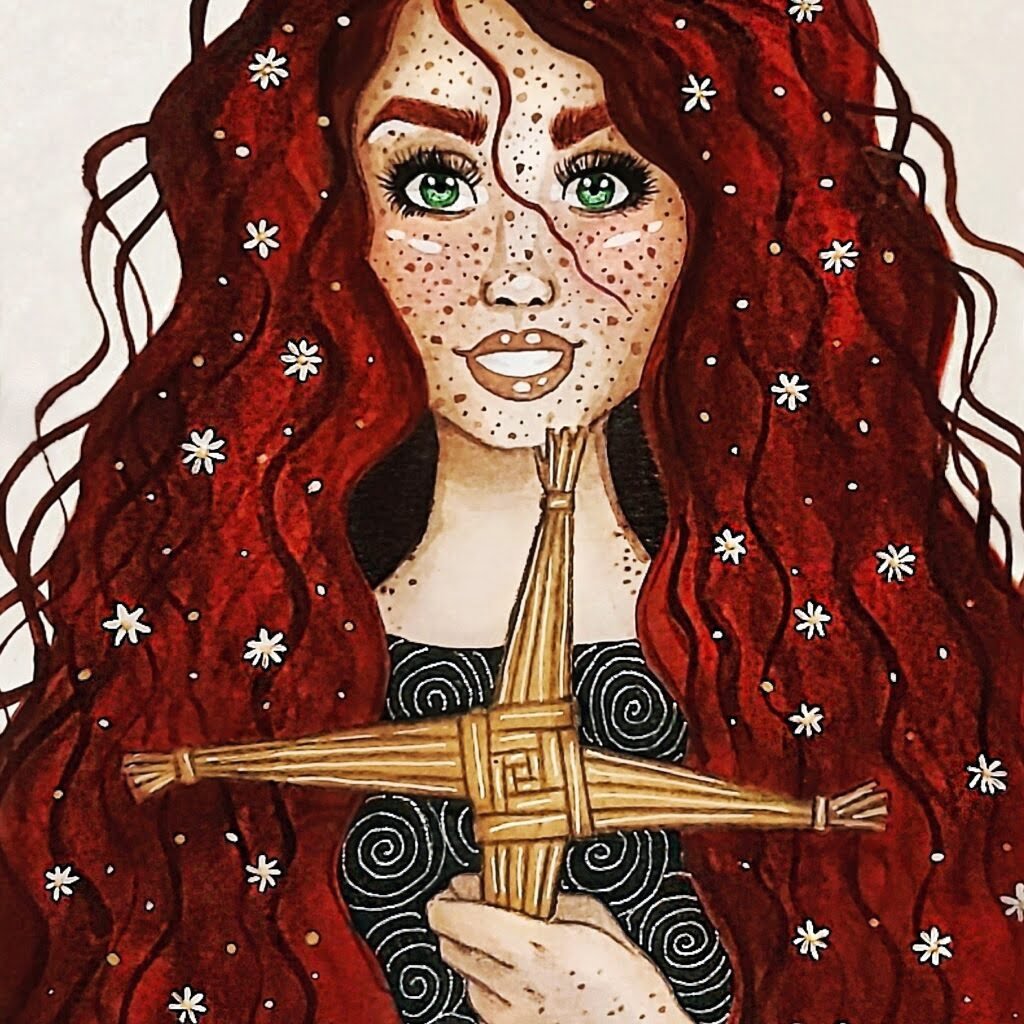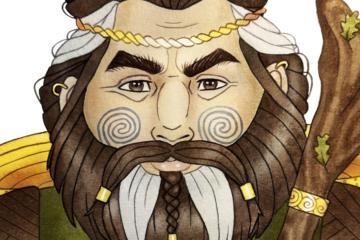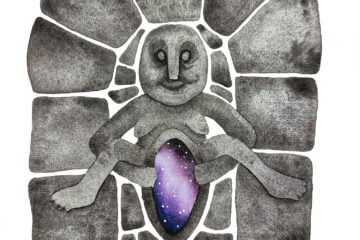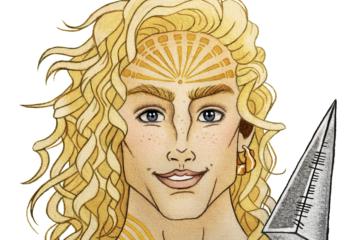
Without a doubt, one of the most famous figures in Irish culture is Brigid, the pre-Christian Goddess who became a Saint. A member of the mythological Tuatha Dé Danann, Brigid is associated with the Spring, new life, poets and smithsamong other things
After Ireland was converted to Christianity, many of the old Pagan traditions were Christianised too. The same is most likely true for Saint Brigid, who shares many attributes with her Pre-Christian counterpart. This has made the story of Brigid quite complex.
The old stories once told of the Pagan Goddess likely came to be reattributed to an Irish nun, also named Brigid, who’s life and works were recorded by medieval hagiographers. There is a lot of debate amongst scholars about the reliability of these writings, and there is even debate about whether a nun named Brigid really existed at all. Regardless of their origin, the stories are very interesting, and offer fantastic contemporary insights into life in Early-Christian Ireland.
Brigid is celebrated on the 1st of February. This festival is known as Imbolg in the Gaelic tradition, or St. Brigid’s day for Christians. The word Imbolg literally translates to ‘in the belly’, referring to the pregnant ewes who will soon give birth to their lambs. Both celebrations mark the beginning of Spring, and many of the symbols that are used in Christian celebration at this time of year are taken from Pagan traditions, such as eggs and lambs which are both associated with fertility.
Mythological Background
Brigid the Goddess was a member of the Tuatha Dé Danann. She was the daughter of the Daghdha, the famous father-figure of Irish mythology. In these tales she married Bres, an unpopular King of the Tuatha Dé Danann who was half Fomorian and half Tuatha Dé Danann. She had a son with Bres whom she named Ruadán.
She appears in several stories throughout Irish mythology, for example when her son Ruadán was killed during the second battle of Moytura she went to the battlefield to mourn him. This was said to have been the first lament in Ireland, describing her lilting, singing wails as keening.
Her associations with the Spring, fertility and new life are probably what are most strongly associated with her to this day. She ushers in the warmth of the sun after the long winter months and calls the earth to bear fruits once again. It is said that Brigid leans over the cradle of every child.
Brigid the Saint
After the conversion of Ireland to Christianity, Brigid was likely adopted by the Church into Saint Brigid. This tells us a lot about how important she was to the Pagan Irish, as the Church went as far as to bring her stories and associations into their faith to make it less strange to the Irish who they were converting.
St. Brigid has a large number of patronages, including Ireland, Leinster, farming, protection of the household and hearth, and protection of vulnerable children and babies. She is seen as Ireland’s second saint, with St. Patrick being the first.
The story of Brigid’s life as a saint is said to start when Dubhthach, a chieftain of Leinster, got her mother pregnant. He then sold Brigid’s mother while she was pregnant to a Druid at the behest of his wife. Her holiness is said to have manifested as an infant when she became ill if the Druid tried to feed her. It manifested in her later childhood in the form of extreme generosity as she gave all her father’s belongings away.
It is said that Brigid went on and founded a monastery in Kildare around the year 480. The story goes that is was founded on the site of a Pagan shrine to the Celtic goddess Brigid under a large sacred oak tree. A group of young women tended an eternal flame on the site which burns to this day. Over the course of her life she would be a pioneer of clerical lives for women in Ireland, and a patron of the arts. She is also said to have enjoyed a close friendship with St. Patrick.
Folk Traditions
There are many traditions all across Ireland that are associated with Brigid. The most famous of these is the making of a Brigid’s cross. These crosses are usually made by bending rushes into a cross shape, and have their origins in pre-Christian Ireland. They are made for protection from evil spirits and sickness, and to honour Brigid.
Another tradition is to leave a scarf called a brat bhríde outside on St Brigid’s eve on the windowsill or on a doorknob. It is said that Brigid would touch the scarf during the night and it would have healing properties, from a cure for infertility to an effective remedy for headaches for the rest of the year.
Other traditions include farmers turning a sod in their field to ensure a plentiful harvest, housewives preparing a festive supper, children going from door to door with an effigy of Brigid, and marriage divination rituals
Further Thoughts
For many lovers of Irish mythology and spirituality, Brigid is a particularly important figure. She is better known than many other figures from Irish mythology, in part due to her journey through the centuries from Paganism to Christianity. Perhaps unintentionally, the fact that she was adopted to the Christian Church has kept her Pagan roots alive more than any other God or Goddess.
Her association with Spring, and Imbolg celebrations are acknowledged around the world and she is seen as a motherly figure representing new life and fertility, along as a strong advocate for the poor and sick.


